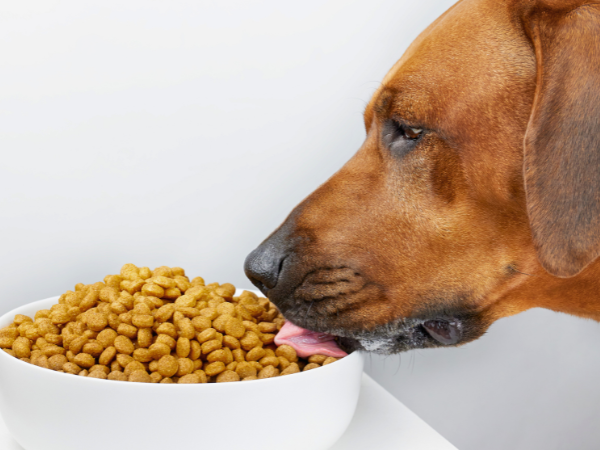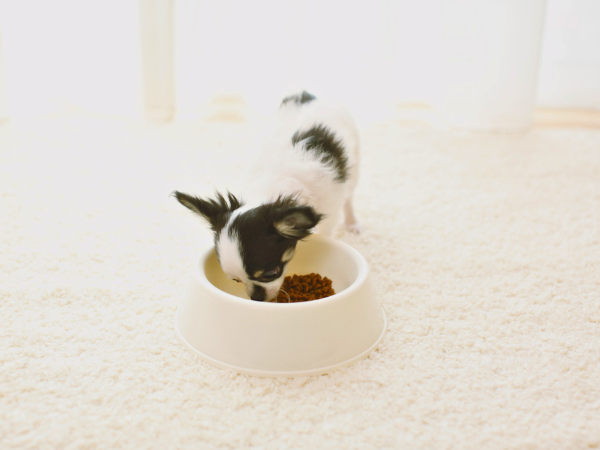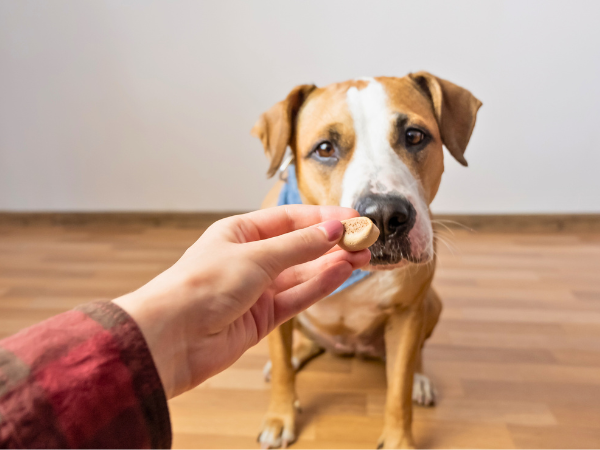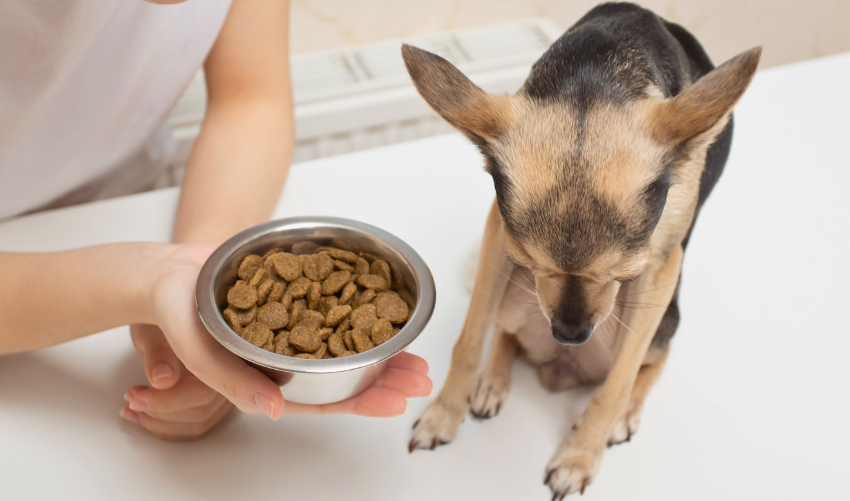Just like us, dogs enjoy variety. Eating the same meal can lead to disinterest, even if it’s healthy.
Exploring new flavors can spark joy in their routine. In this post, we will discuss signs of food boredom and how to bring excitement back to your dog’s meals.
Understanding Canine Taste Preferences
Dogs experience flavor differently than humans. They have fewer taste buds but are more sensitive to scent and texture. This affects what they enjoy eating. Just like us, dogs can become uninterested in the same food day after day.
How Dogs Perceive Flavor
Dogs perceive flavor in unique ways. They have about 1,700 taste buds, while humans have around 9,000. This means dogs rely more on scent to enjoy their food. Here’s how dogs perceive flavor:
- Scent: Dogs have a powerful sense of smell. They can detect different scents in their food, which enhances their eating experience.
- Texture: The feel of food in their mouth matters. Dogs often prefer crunchy kibble or soft wet food.
- Temperature: Some dogs enjoy warm food. It can make meals more inviting.
Dogs respond strongly to texture and scent. This is why they may turn away from dry kibble after a while. In the wild, dogs didn’t eat the same thing every day. Variety was part of survival.
Natural Eating Habits Of Dogs
Dogs are scavengers by nature. They eat whatever they can find. This means their diet is often varied. Here are some natural eating habits:
- Foraging: Dogs in the wild search for food. They eat fruits, vegetables, and small animals.
- Variety: A range of foods keeps them healthy. Different nutrients come from different sources.
- Seasonal Changes: Dogs adapt their eating habits based on what is available.
By offering a mix of flavors and textures, you can keep your dog interested in their meals. Rotate between dry kibble, wet food, and homemade options. This helps mimic their natural eating habits.
Make feeding time enjoyable. Experiment with different recipes. Use fresh ingredients to create excitement.

Do Dogs Really Get Bored Of Their Food?
Eating the same food every day can lead to a lack of interest. If your dog seems less excited at mealtime, it might be time to investigate.
Signs Your Dog Might Be Losing Interest
Dogs may not express boredom verbally, but their actions speak volumes. Here are some common signs that your dog might be losing interest in their food:
- Sniffing but not eating: Your dog approaches the bowl but turns away without taking a bite.
- Leaving food behind: If your dog consistently leaves food in the bowl, they may be uninterested.
- Showing more interest in human food: If your dog begs for scraps from your plate, they might prefer different flavors.
Tracking these signs helps you decide if a change is needed. Here’s a quick summary of these signs:
| Sign | Description |
|---|---|
| Sniffing but not eating | Dog shows no interest in their food. |
| Leaving food behind | Food remains untouched after meals. |
| Interest in human food | Dog prefers your food over their own. |
If you notice these signs, your dog may need a change in their diet. Consider introducing new flavors or textures to reignite their interest.
Is It Boredom Or A Health Concern?
A change in eating habits can signal health issues. Pay close attention to your dog’s overall behavior. A lack of appetite could be due to illness, dental issues, or stress—not just boredom.
Look for these additional signs that may indicate a health concern:
- Changes in energy levels: If your dog seems lethargic, it could be a sign of illness.
- Weight loss: Unexplained weight loss is a red flag.
- Digestive issues: Diarrhea or vomiting may indicate a health problem.
Monitoring your dog’s behavior is essential. If they show any of these signs, consult your veterinarian. They can help determine if the issue is boredom or something more serious.
Risks Of Changing Dog Food Too Often
Keeping their meals interesting is important, but changing dog food too often carries risks. Frequent changes can upset their stomachs and lead to other health issues.
Sensitivity To Sudden Diet Changes
Dogs are creatures of habit. Their digestive systems can react poorly to sudden changes in their diet. Abrupt shifts can cause digestive upset or food intolerance. This can lead to symptoms such as:
- Vomiting
- Diarrhea
- Gas
- Lack of appetite
Many dogs need time to adjust to new foods. A sudden switch can overwhelm their stomachs. Here’s a simple table showing how to transition your dog’s food safely:
| Days | Old Food (%) | New Food (%) |
|---|---|---|
| 1-2 | 75 | 25 |
| 3-4 | 50 | 50 |
| 5-6 | 25 | 75 |
| 7+ | 0 | 100 |
This gradual method helps dogs adapt. Gradual variety in protein sources can offer balanced nutrition without tummy troubles.

When Rotation Feeding Makes Sense
Rotation feeding can be a great way to keep your dog engaged with their meals. It means changing their food regularly, but it should be done thoughtfully. This practice introduces different flavors and nutrients.
- Choose high-quality dog foods.
- Rotate between different protein sources.
- Keep track of your dog’s reactions to each food.
Start with rotating every few weeks. This gives your dog time to adjust. Monitor their health closely. Signs of intolerance can include:
- Change in stool consistency
- Increased gas
- Behavior changes after meals
By observing your dog, you can find the best rotation schedule. Each dog is different. Some may handle changes better than others.
Keeping Mealtime Exciting Without Risk
Keeping mealtime exciting without risking your dog’s health is important. Simple changes can make a big difference.
Healthy Mix-ins To Add Flavor
Mix-ins can add flavor and excitement to your dog’s meals. They also provide extra nutrients. Here are some healthy options:
- Pumpkin: Rich in fiber and vitamins.
- Bone Broth: Adds moisture and flavor.
- Plain Yogurt: Good for digestion, just ensure it’s low in sugar.
- Dog-Safe Veggies: Carrots, peas, and green beans are great choices.
These mix-ins can change your dog’s mealtime. They help make food more exciting. Plus, they keep your dog healthy and happy.
Enhancing Texture And Temperature
The texture and temperature of food can change how your dog enjoys it. Dogs often prefer different textures. Here are some ideas:
- Mix in wet food: This adds moisture and a new texture.
- Warm the food: Heat it slightly to release aromas.
- Top with soft foods: Use mashed veggies or meat purees.
Try these tips to change mealtime:
- Warm the kibble with a bit of water or broth.
- Add a spoonful of plain yogurt for creaminess.
- Mix in soft foods like cooked sweet potatoes or green beans.
Changing the texture or temperature can make meals fun. Your dog may enjoy eating more. Keep trying different combinations to see what works best.

When To Consider A Food Switch
A change in diet can help keep their interest alive and ensure they get the nutrients they need. Factors like age, activity level, and ingredient quality play a vital role in their diet.
Outgrowing A Puppy Formula
Puppies need special food to grow strong and healthy. Puppy formulas are rich in nutrients. They support growth and development.
- Age: Most puppies can transition to adult food around 12 months.
- Activity Level: Active dogs may require different nutrients.
- Weight Changes: Weight gain or loss may signal a need for change.
Transitioning to adult food based on age and activity level is vital. Adult dog food has different levels of protein and fat. It’s tailored for maintenance rather than growth.
| Feature | Puppy Food | Adult Food |
|---|---|---|
| Protein Content | High | Moderate |
| Fat Content | Higher | Lower |
| Caloric Density | Higher | Lower |
Switching foods at the right time helps maintain your dog’s health. Keep an eye on your dog’s growth and activity. Adjust their food as needed.
Better Ingredients, Better Engagement
Sometimes your dog’s food just isn’t that good. Cheap dog foods may lack essential nutrients. Low-quality ingredients can lead to a bored dog. Dogs thrive on variety and better ingredients.
- Low Energy: A lack of energy may signal poor nutrition.
- Unhealthy Coat: Dull or flaky fur indicates nutritional gaps.
- Digestive Issues: Upset stomachs or irregular bowel movements.
When selecting dog food, look for:
- Whole meats as the first ingredient.
- Whole grains or vegetables for fiber.
- No artificial flavors or preservatives.
Quality ingredients can lead to better health and engagement. When you provide better food, your dog will show more excitement at mealtime.
Should You Change Up Your Dog’s Diet?
A varied diet can keep mealtime exciting and enjoyable. But should you change up your dog’s diet? Making the right choice is essential for their health and happiness.
Every Dog Is Different
Understanding your dog’s unique needs is crucial. Dogs have different preferences and dietary requirements. Some thrive on routine, while others love variety. Here are a few factors to consider:
- Age: Puppies, adults, and seniors have different nutritional needs.
- Activity Level: Active dogs may require more calories.
- Health Issues: Some dogs may have allergies or sensitivities.
- Breed: Different breeds may have specific dietary needs.
It’s helpful to observe your dog’s behavior at mealtime. Signs of boredom can include:
- Refusing to eat
- Eating too quickly
- Looking for food elsewhere
Choose a feeding routine that supports wellness and keeps tails wagging. Pay attention to your dog’s preferences. They will guide you on whether a change is needed.
Prioritize Health And Enjoyment
Changing your dog’s diet can be a fun experience. Focus on both health and enjoyment. A balanced diet is vital for your dog’s well-being. Consider these key points:
- Quality Ingredients: Always choose high-quality dog food.
- Variety: Introduce different proteins and flavors.
- Consistency: Gradually mix in new food with the old.
- Consult a Vet: Seek professional advice for specific needs.
Keep mealtime exciting. Here are some ways to enhance your dog’s dining experience:
- Add toppings like pumpkin or yogurt.
- Rotate flavors weekly to keep things fresh.
- Incorporate homemade treats occasionally.
Prioritize health and enjoyment. A happy dog is a healthy dog. Keep your furry friend engaged and nourished.


